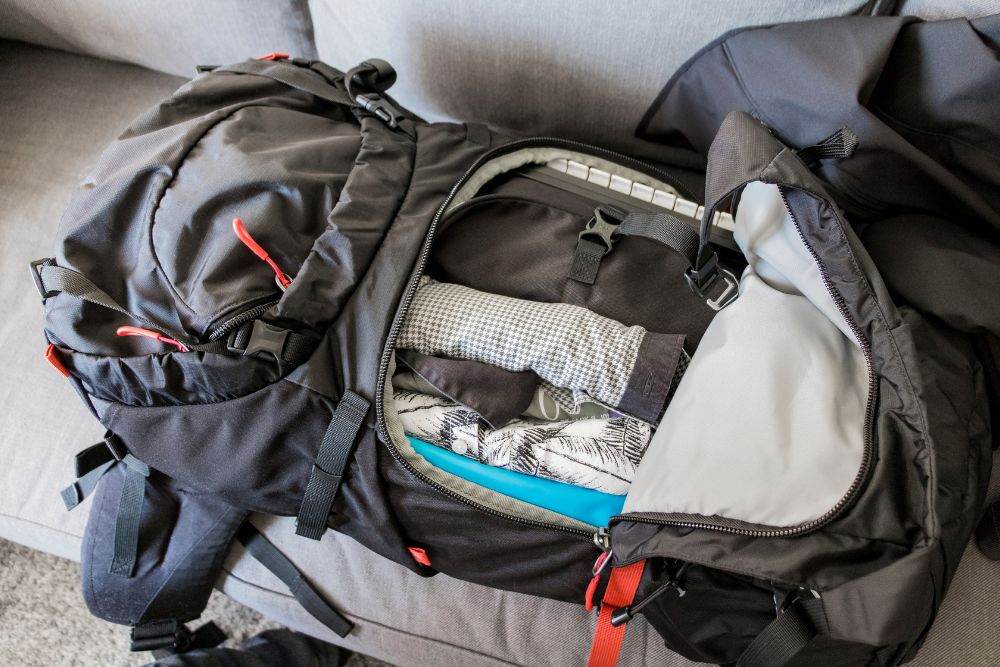If a disaster strikes and you make the decision that you can’t bug in, your other option is to bug out or leave the area.
How to Decide
Bugging-in or bugging-out is generally not a decision that can be made in advance of an emergency. You will only be able to decide when it strikes what will be best for you and your family. For example, in a simple power outage, you can probably bug in. If a hurricane is on its way, you may be encouraged to bug out.
The best way to prepare for either is to get your emergency supplies in order, organized, and in a portable container. Then, whether you bug in or bug out, you’ll have everything you need in one place. If you’re bugging in, you can take stock of what you have and start to prepare for a couple of nights without power. If you’re bugging out, you simply put it all in your trunk with your family, make a couple of preparations for your house, and off you go.
Once you’ve made the decision to bug out, you should expedite your movement and get out of the area as soon as possible. The longer it takes you to gather supplies and hit the road, the more likely either the emergency or other people will block your path.

What to Pack
Start out with your general emergency supplies kit. All of those items will be useful wherever you go.
You’ll need additional supplies for your journey, including shelter along the way. The problem with bugging out is that you’ll have a limited amount of cargo space in your car, truck, or van, part of which will be taken up by your passengers. Remember that the number one priority while bugging out is protecting and transporting you and your family.
Other items you may need for bugging-out include:
- Tents for shelter along the way or at your destination
- Extra gasoline to make it to your destination
- Food preparation devices, such as a stove and gas containers
- Priceless or unreplaceable personal items that you want to take with you
The last category of items is worth spending some time thinking about. You’re leaving your home, and you may be away from it for a while. Something (or someone) may cause damage to your home while you are away. If you have personal items that are absolutely priceless and can’t be replaced, you should plan for exactly how they’ll come with you. You don’t want to have to make the decision of what stays and what goes while you’re packing up to leave town 10 minutes from now.
If at all possible, try to test pack all of your supplies now. You may find that you don’t have enough room to take everything you want. It’s better to figure this out now and adjust rather than in the middle of a panic.
Transportation
If you intend to bug out, you’ll need reliable transportation to get to your destination. This is called your Bug Out Vehicle (BOV). Whether it’s a car, truck, SUV, van, boat, or plane, make sure it’s suitable for travel to your destination.
You’ll probably pick one of your existing family vehicles to be your BOV. If you’re going to be transporting enough people or supplies to require two vehicles, make sure that two vehicles are absolutely necessary. With two vehicles you’ll be more likely to have one of them break down or run out of gas. Leaving one vehicle behind with your supplies (or family members) is not a situation you want to find yourself in.
Having an off-road SUV as your BOV could come in handy if you need to get around debris or turn off of the pavement for a while. An SUV will also have more cargo capacity than a standard family car. The trade-off is that the gas mileage might not be as good. You’ll need to do some mileage calculations to see if you’ll have to fill and refill your tank prior to reaching your destination.
Try to keep your BOV at least halfway filled with gas. You never know if the gas stations in your area will be operational when you have to leave, or if the gas stations along the way will be open. Gas stations will also be packed if others are trying to get out of town too.
Pick Places to Go
Part of your emergency plan should be a list of several locations where you could bug out to. Pick at least one or two destinations in every compass direction from your home (North, South, East, and West). You never know what areas will be affected by the emergency or how far away you’ll need to go.
Suitable locations for bugging-out should be at least 50 miles away from your town, preferably 100+ miles away or in another state. Locations could be your family or friend’s place, a cabin you own, or a known campground or national forest land. Be aware that if you’re heading to a public area or to government-owned land, it is more likely to be full of other people who have fled your area. A private residence that you or your family/friends own would be a better choice and probably more comfortable for you.
Purchase road and terrain maps (paper or laminated) that show your route from your home to all of the destinations. Your GPS may or may not be reliable, and you may need to make adjustments along the way due to road conditions. Study the map a bit now, so you know alternate routes.
Put these destinations and maps into your emergency plan.

What to Do
Once you’ve made the decision that you’re bugging out, you should take immediate action to get out of the area. But first:
- Get to your pre-determined meeting location
- Account for everyone you’re in charge of
- Try to get details on what’s going on
- Pick where you’re heading to, and re-study the route
- Get immediate supplies packed into your BOV so you’re prepared to leave as soon as possible. This includes:
- Your emergency kit
- Road supplies (gasoline, etc.)
- Maps
- Any priceless or unreplaceable personal items you need with you.
- Prepare your house for your absence: lock the doors, board up the windows, etc.
- Fill up your car with gas before you leave town if they’re still open and the lines aren’t too long.
- Hit the road!
Getting There
By now, you have picked your destination, packed your car, and hit the road.
Getting to your destination may not be a walk in the park. Along the way, you may encounter some obstacles:
- Destroyed or blocked-off roads
- Stalled or stopped traffic
- Debris that could damage your car
- Other broken-down vehicles
Try to do your best to avoid these if at all possible. If you start heading towards the highway and it looks like a parking lot, take out your map and look for alternate routes that avoid it.
Be prepared to backtrack if necessary. If a road looks dangerous, you don’t want to risk your BOV breaking down and stranding you.
Monitor your gas consumption and keep an eye on the gas stations. If you’re getting low and some of the gas stations are closed or have huge lines, it’s better to fill up your tank partially several times rather than risk running out of gas in the middle of nowhere.
If you have to stop for rest, try to pull off the road a bit where you won’t be disturbed or accidentally hit. Like any long road trip, trade-off driving responsibilities if you have other family members that are suitable.
Driving in an emergency situation will require a high level of alertness. Not everyone will be able to handle the challenge. You may decide that only you have the fortitude to drive during the bug-out. Be prepared for this and take breaks when you can.
Arriving
Hopefully, you’ll make it to your destination with as minimal fuss as possible.
Once you get there, you’ll want to unpack. Try to make your new location as comfortable as possible. You don’t know how long the situation back home will last.
If you’re temporarily living with friends or family in their homes, you should be pretty comfortable. If you need to camp for a while (especially if you don’t camp regularly for fun), you may find it a bit uncomfortable. Try to adjust to your new location, knowing (hoping) it’s only temporary.
When to Go Back
Naturally, you won’t want to be away from your home forever. Stay alert and try to get as much information about your home area as possible from afar. As the situation improves, you may decide to head back. Go slowly, and be prepared to not make it completely home on your first try. Things may still be blocked, or the situation may not be as good as you had hoped.
Conclusion
Now that you know what to do when a crisis hits and how to get to your destination, it’s important to have a plan for what comes after. This includes making sure you have the supplies you need and knowing where you’re going. Try not to panic in a crisis situation, and remember that things may not be as bad as they seem. Stay safe!

